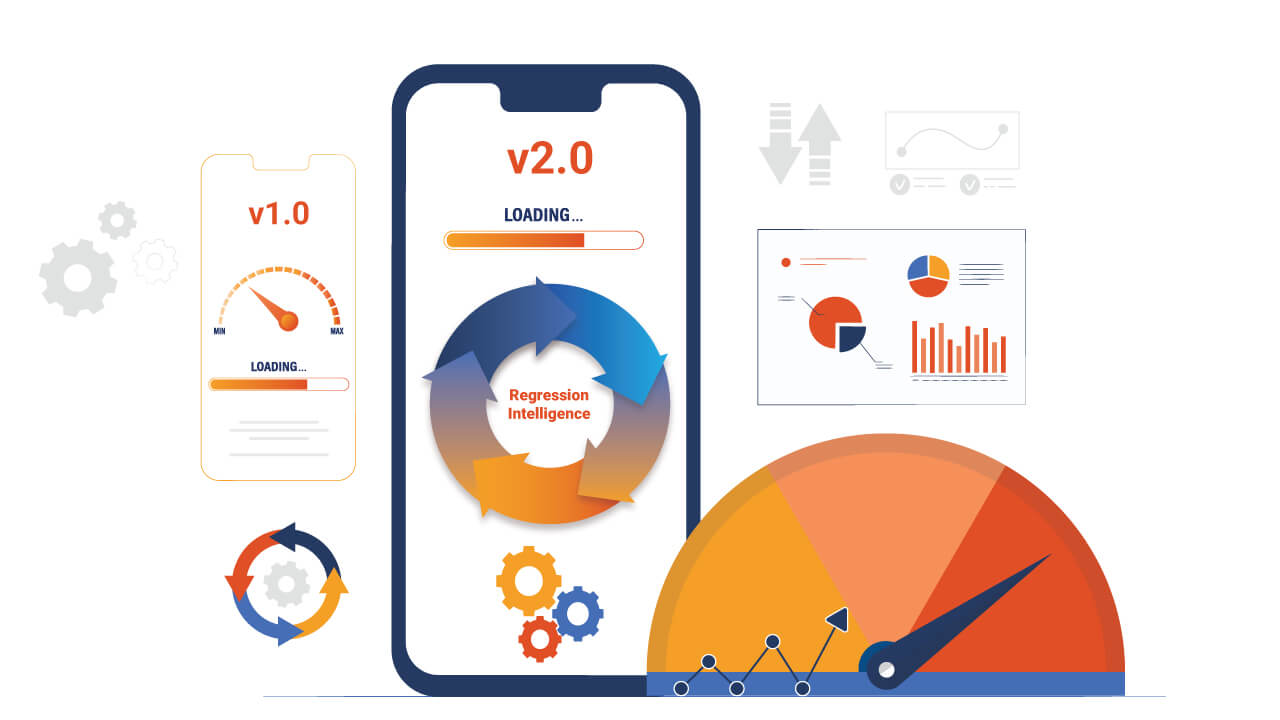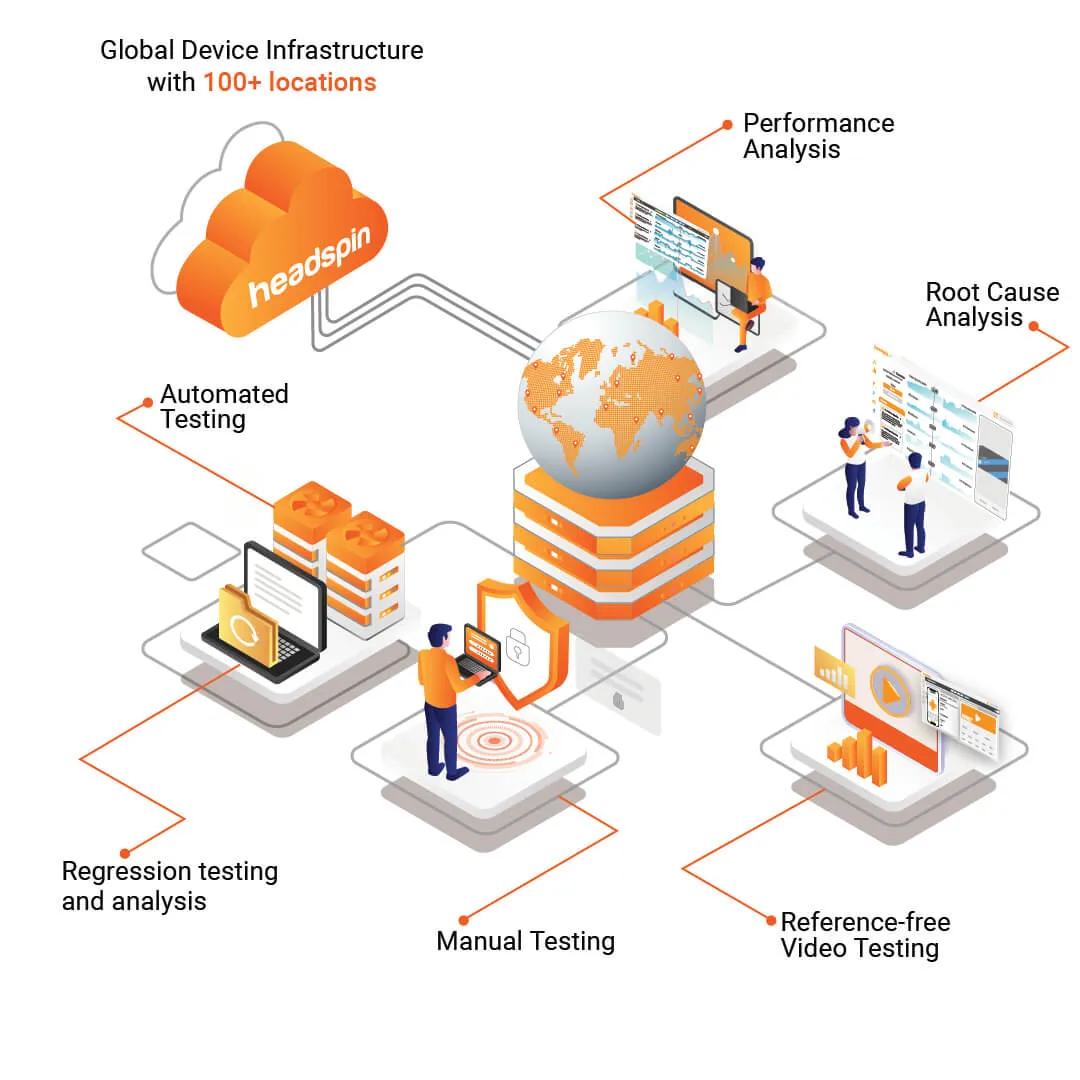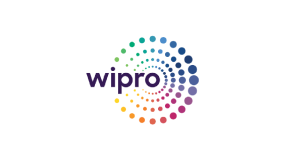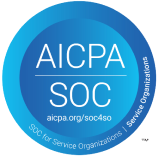Introduction
Once an overlooked aspect, continuous testing has become indispensable for enterprises striving to accelerate application delivery and reduce business impacts. According to a Statista report, 31.3% of global enterprises have embraced continuous integration and deployment within their DevOps, signaling a pervasive trend toward hastening release cycles.
In this dynamic landscape, continuous testing emerges as the linchpin, empowering organizations to accelerate software delivery, ensure high-quality digital experiences across diverse platforms, and meet evolving customer demands. The infusion of continuous integration and deployment offers the much-needed flexibility to seamlessly integrate automated testing into development stages, enabling early error identification and a substantial enhancement in the quality of each software release candidate.
As we delve into what it is, underscore its significance, explore best practices, and elucidate the pivotal role of HeadSpin in its implementation, we invite you to navigate this informative blog to gain valuable insights into this transformative approach.
What is Continuous Testing?
In traditional testing approaches, projects often involve handovers between different teams, leading to inefficiencies in feedback and coordination. The crux of an effective DevOps strategy lies in bridging the gap between swift software delivery and reliable user experiences. This is precisely where continuous testing is pivotal in the software development lifecycle.
It operates as a linchpin in the software delivery pipeline, offering instant feedback on business risks and identifying software malfunctions promptly. Continuous testing tools take center stage in today's fast-paced business landscape, where rapid development and timely software delivery are paramount. These tools enhance code quality and circumvent costly bottlenecks, expediting the entire software development process.
Enterprises now view continuous testing as an automated and secure means to ensure the security and effectiveness of their applications in the intricacies of a dynamic and fast-paced development environment. This shift underscores the growing recognition of this as essential for delivering robust and efficient software solutions.
Key Components of Continuous Testing:
- Continuous Integration (CI): Continuous integration, a cornerstone of this testing in DevOps, involves consolidating codes from development teams into a central repository. This collaborative approach can lead to potential bugs. However, this testing in DevOps automates test executions upon code integration, empowering testers to detect and rectify errors swiftly. Identifying issues before product release saves companies significant time, cost, and effort.
- Continuous Delivery (CD): An integral phase within this testing in DevOps, continuous delivery facilitates incremental product updates through small, frequent changes. In this model, development teams maintain deployable code versions at every developmental stage, ensuring readiness for production deployment.
- Test Automation: Test automation is crucial in this testing, providing rapid feedback to all teams involved. This testing tools empower development teams with early and consistent feedback, enabling timely updates well before product or feature releases in the market. The efficiency gained through automated testing enhances overall development processes.
Check: How to Boost Performance with Continuous Testing in DevOps
The 3 Fundamentals of Continuous Testing
- Automation Integration: Continuous testing heavily relies on integrating automated tests throughout the software development lifecycle. This ensures that tests are run continuously, providing immediate feedback on the health and stability of the codebase.
- Shift-Left Testing: Testing is performed early and often in the development process, allowing for early detection and resolution of defects. This approach reduces the cost and complexity of fixing issues later in the cycle.
- Continuous Feedback: A constant feedback loop is established, continuously monitoring and analyzing test results. This enables teams to make decisions fast and ensures that quality is maintained throughout development.
Steps to Perform Continuous Testing
- Integrate Testing into CI/CD Pipelines: Embed automated tests within your Continuous Integration/Continuous Deployment (CI/CD) pipelines. This ensures that tests are executed automatically with each code commit.
- Select Appropriate Testing Tools: Use tools that support various testing types like unit tests, integration tests, functional tests, and performance tests. Ensure these tools integrate well with your CI/CD setup.
- Develop a Comprehensive Test Suite: Create a wide range of automated tests to cover different aspects of your application. Ensure these tests are regularly updated and maintained.
- Implement Shift-Left Practices: Begin testing early in the development process to catch defects when they are cheaper and easier to fix.
- Monitor and Analyze Results: Continuously monitor and analyze test results to identify trends, bottlenecks, and areas for improvement.
- Foster Collaboration: Encourage collaboration between development, QA, and operations teams to ensure quality is a shared responsibility.
By following these fundamentals and steps, organizations can ensure that continuous testing is effectively implemented, leading to higher-quality software.
How Does Continuous Testing in DevOps Play a Vital Role?
Continuous testing in DevOps plays a vital role in ensuring the seamless and efficient delivery of high-quality software. It does this by embedding automated testing throughout the software development lifecycle, from initial code commit to final deployment. Here are several ways in which it is crucial in a DevOps environment:
- Early Detection of Defects: By integrating continuous testing in DevOps, organizations can identify defects and issues early in the development process. Automated tests are run as soon as code changes are committed, providing immediate feedback to developers. This early detection helps prevent the accumulation of defects, reducing the time and effort required to address issues later in the development cycle.
- Faster Release Cycles: Continuous testing supports the rapid release cycles characteristic of DevOps by ensuring that code is always in a releasable state. Automated tests are executed continuously, allowing teams to quickly validate changes and move them through the pipeline. This continuous validation helps maintain a steady flow of high-quality software, enabling faster delivery to production.
- Improved Collaboration: In a DevOps environment, continuous testing fosters improved collaboration between development and operations teams. Automated testing provides a common framework for both teams to work within, promoting shared responsibility for quality. This collaboration helps break down silos and encourages a culture of continuous improvement and communication.
- Enhanced Test Coverage: Continuous testing in DevOps leverages automation to achieve extensive test coverage. Automated tests can cover a wide range of scenarios, including unit tests, integration tests, and end-to-end tests. This comprehensive test coverage ensures that all aspects of the application are thoroughly validated, reducing the risk of undetected issues in production.
How Does Continuous Testing Fit into DevOps?
Continuous testing fits into DevOps by seamlessly integrating into the Continuous Integration and Continuous Deployment (CI/CD) pipeline, ensuring that quality checks are performed at every stage of the software development lifecycle. This integration is critical to the DevOps philosophy, which emphasizes automation, collaboration, and rapid delivery of software.
Integration with CI/CD Pipelines:
Continuous testing is embedded within CI/CD pipelines, where automated tests are triggered with each code commit. This practice allows for immediate feedback on the impact of changes, ensuring that any defects are quickly identified and resolved. By doing so, it supports continuous integration, where code changes are frequently merged into a shared repository, and continuous deployment, where updates are automatically pushed to production.
Automated Testing:
Automation is a cornerstone of DevOps, and continuous testing leverages this by automating a wide range of tests, including unit tests, integration tests, functional tests, and performance tests. Automated testing reduces the manual effort required, speeds up the testing process, and ensures consistent test execution, which is essential for maintaining high-quality standards in fast-paced development environments.
Shift-Left Testing:
Continuous testing encourages a shift-left approach, where testing is performed earlier in the development process. This proactive strategy helps in identifying and addressing issues before they escalate, reducing the cost and effort associated with fixing defects later in the lifecycle. By incorporating testing from the initial stages, teams can ensure that quality is built into the product from the start.
Collaboration and Communication:
DevOps promotes a culture of collaboration between development, testing, and operations teams. Continuous testing facilitates this by providing a shared platform for quality assurance. Automated test results are accessible to all stakeholders, fostering transparency and enabling quicker decision-making. This collaborative environment helps in aligning goals and ensuring that quality is a shared responsibility.
Continuous Feedback Loop:
Continuous testing establishes a continuous feedback loop, where test results are continuously monitored and analyzed. This loop provides valuable insights into the health of the application, helping teams to make informed decisions about the readiness of the software for production. Continuous feedback ensures that quality issues are promptly addressed, and improvements are continuously made.
Read: A Comprehensive Guide to Continuous Integration
How Does Continuous Testing Differ from Traditional Testing?
Continuous testing and traditional testing represent two distinct approaches to software quality assurance, each with its unique characteristics, methodologies, and outcomes. Here's an in-depth look at how they differ:
1. Timing and Frequency of Testing:
- Traditional Testing: In traditional software development models like Waterfall, testing typically occurs after the development phase is complete. This means testing is often a discrete phase that happens towards the end of the project lifecycle. As a result, defects are identified late, making them more costly and time-consuming to fix.
- Continuous Testing: In contrast, it is integrated throughout the development lifecycle. Automated tests are executed continuously at every stage, from development to production. This approach ensures that code is tested as soon as changes are made, providing immediate feedback to developers.
2. Feedback Loop:
- Traditional Testing: The feedback loop in traditional testing is relatively long. Developers may not receive feedback on code quality until weeks or even months after writing the code. This delay can lead to a backlog of defects that need to be addressed late in the development process.
- Continuous Testing: It provides a much shorter feedback loop. Automated tests run with every code commit, delivering instant feedback on the impact of changes. This immediate feedback helps developers quickly identify and fix issues, maintaining the quality of the codebase.
3. Test Coverage and Automation:
- Traditional Testing: Traditional testing often relies heavily on manual testing, which can be time-consuming and prone to human error. While automated tests may be used, they are usually not as extensively integrated into the development process.
- Continuous Testing: It emphasizes comprehensive test automation. Automated tests cover a wide range of scenarios, including unit tests, integration tests, functional tests, and performance tests. This extensive automation ensures consistent and thorough test coverage, reducing the reliance on manual testing.
4. Risk Mitigation:
- Traditional Testing: Due to the late timing of testing in traditional approaches, there is a higher risk of discovering critical defects just before release. This can lead to delays, increased costs, and in some cases, the need to roll back releases.
- Continuous Testing: By continuously testing throughout the development process, continuous testing mitigates risks early. Defects are identified and addressed in real-time, reducing the likelihood of critical issues making it to production. This proactive approach enhances overall software stability and reliability.
Diverse Methodologies in Continuous Testing
Continuous testing in DevOps encompasses a spectrum of tests ensuring reliability, security, operational performance, and usability. Various testing methodologies within this spectrum include:
- Shift-Left Testing: Prioritizing early software and system testing in the software development life cycle (SDLC) to minimize debugging challenges later in the process.
- Shift-Right Testing: Emphasizing testing towards the end of the SDLC to enhance user experience, overall performance, failure tolerance, and functionality.
- Smoke Tests: Initial, cursory screenings (manual or automated) for glaring flaws in software, offering a swift and cost-effective solution for eliminating gross errors.
- Unit Testing: Ideal for small-scale stress, load, volume, or memory leak checks in early developmental stages to identify potential degradations.
- Integration and Messaging Testing: Checking errors when software modules collaborate, with continuous testing in DevOps virtualizing missing dependencies to assess end-to-end processes and scenarios.
- Performance Testing: Assessing application software performance, with integrated system testing required to evaluate overall solution performance, accounting for hardware and middleware in the final production environment.
- Functional Testing: Verifying if the user experience aligns with expectations and if functional workflows are executed across the software system as needed. In contrast, non-functional testing focuses on performance, usability, reliability, and scalability.
- Regression Testing: Ensuring no changes in performance, functionality, or dependencies after correcting errors in dependent software, maintaining system performance.
- User-Acceptance Testing: Also known as application or end-user testing, assessing the application in real-world situations by a subset of intended users. Beta testing serves as an example in this scenario.
Continuous Testing in DevOps: Key Considerations for Managers
While integrating continuous testing into the software delivery pipeline and DevOps toolchain is seamless, prudent considerations are essential before delving deep. Here are eight factors for managers to contemplate when implementing Continuous Testing in DevOps:
- Project Portfolio: Consider the number and types of projects encompassing mobile, web, and responsive web applications.
- Team Skill Set: Evaluate the team's skills, encompassing testing proficiency, coding capabilities, and familiarity with development languages.
- Team Size: Assess the team size for development, testing, and operations to ensure seamless collaboration.
- Automation Tools and Technology: Decide on the tools and technologies for automation that align with the organization's needs.
- SDLC Methods: Incorporate Software Development Lifecycle methods like Acceptance Test Driven Development (ATDD) and Behavior-Driven Development (BDD).
- Market Analytics: Stay informed about market analytics and trends to support integrating new features effectively.
- Lab Sizing and Coverage: Determine lab sizing and coverage requirements for comprehensive testing.
- Clear Metrics: Establish clear and easily understandable metrics to gauge performance and progress.
Also check: A comprehensive guide to mastering performance testing
Continuous Testing and Automation
Continuous Testing, a valuable practice for timely bug detection and resolution, is inseparable from automation. It identifies bugs early and saves time, effort, and money. Investing in a robust automation tool is essential for organizations transitioning from continuous integration to efficient continuous delivery, meeting evolving customer demands.
Continuous Testing, Continuous Integration, Continuous Delivery, DevOps
Continuous Testing strives for continual quality improvement in the software development lifecycle, mitigating business risks. Continuous Integration streamlines the software release process, focusing on integrating new commits. Continuous Delivery extends this by automating the release process, enabling software deployment at any frequency with a click.
Importance of Continuous Testing in DevOps
In the DevOps landscape, continuous testing ensures seamless integration of automated end-to-end testing, fixing errors, and maintaining continuity throughout development. Key advantages include:
- Reduced Feedback Cycle: Automated test cases integrated into the build pipeline provide instant feedback at each development step.
- Quality Priority: It ensures continuous testing from start to end, prioritizing quality at every stage.
- Maximum Test Coverage: Early integration of CI/CD pipeline automation testing improves and enhances test coverage, instilling confidence in code updates and minimizing business risks before product release.
Continuous Testing Benefits for Enterprises
- Enhanced Risk-based Feedback: Continuous testing empowers QA teams to identify and rectify code bugs before release. Utilizing test automation tools provides actionable insights, offering a more effective alternative to time-consuming manual testing. In the continuous testing model, these tools generate risk-based insights, enabling testers to bolster coverage of business risk factors and address issues before release.
- Improved Efficiency in Testing: Continuous testing assists development teams in determining whether shift-left or shift-right testing is optimal for the software development cycle. Additionally, automated end-to-end testing enhances efficiency by eliminating false positives and timeouts. With continuous testing, enterprises can establish a robust architecture ready for future product or feature expansion based on evolving user demands.
- Enhanced Team Collaboration: Continuous testing fosters a more efficient development pipeline, ensuring seamless team collaboration. Effective collaboration is crucial for heightened productivity and efficiency in the software development process. Integrating quality assurance across all development stages enables teams to be well-informed at each pipeline step, facilitating the delivery of high-quality code from the early development phases.
- Informed Release Decisions: Continuous testing, integral to agile and DevOps environments, reduces the time required for designing, developing, and delivering software updates. As release timelines shrink, so does business risk. It becomes a critical tool for developers, comprehensively analyzing business risks before deploying release candidates. It guides developers in making informed decisions on when and how to release necessary changes.
- Elevated User Experiences: Continuous testing primarily focuses on preventing errors stemming from faulty code from reaching users and disrupting their experience. Striking a balance between providing new features and preserving the existing user experience is crucial. Continuous meticulous testing ensures that every element of the user experience is considered and preserved, preventing potential negative impacts on sales, CSAT, and brand reputation.
Also read: How Enterprises Conduct Automated Continuous Testing at Scale with Jenkins
Challenges in Implementing Continuous Testing
Implementing this testing, while offering significant advantages, presents distinct challenges for software development teams:
- Integration with DevOps: Adequate tools and training often need to be improved, hindering the effective implementation of this testing and this testing within DevOps frameworks.
- Cultural Shift: Embracing this testing may necessitate a substantial cultural change, particularly for teams accustomed to traditional processes in both development and testing.
- Testing Strategy Updates: Overreliance on conventional testing methods and poorly defined test data management can impede the efficacy of this testing, demanding a shift in testing strategies.
- Regular Code Integration: Developers who infrequently integrate their code risks issues such as duplicate coding efforts and incompatible code, leading to defects.
- Test Environment Management: Ensuring compatibility between test environments and the code repository is imperative for seamless testing of the latest code.
- Production Environment Alignment: Vital alignment between production and test environments is crucial to ensure thorough testing of all software aspects.
Best Practices for Successful Continuous Testing
- Commit to Delivering Best Quality: Success in a continuous testing framework hinges on a collective commitment to delivering the highest quality. Collaboration across all teams, including development and testing, is essential. Non-technical teams, such as stakeholders and product owners, should also align their work habits and mindsets to foster a culture of continuous testing.
- Test at Every Stage of the Development Cycle: Early-stage testing in the software development cycle allows for the early detection of bugs, minimizing the cost compared to fixing those bugs in production. Make testing a foundational step in every process to ensure the code operates as designed, even with new updates.
- Monitor the Entire Development Cycle with Analytics: Leverage data analytics to comprehend test performance, swiftly pinpoint bottlenecks and quality issues, and attain real-time visibility into coverage, errors, test run times, and efficiency. This empowers development teams to detect trends and update code for improved quality and accelerated releases.
- Use a Testing Platform with Comprehensive Coverage: Optimize customer experiences by leveraging a testing platform that offers comprehensive coverage and flexibility. Choose a platform that empowers development and QA teams to perfect digital experiences for all customers, ensuring thorough testing and enhanced quality.
Automated Testing vs Continuous Testing: Synergizing Development Efforts
While related, Continuous and automated testing hold distinct roles in software development. Continuous Testing involves executing automated tests to assess business risks in software releases, while automated testing refers explicitly to using automation instead of manual processes.
The combined impact of Continuous and automated testing on DevOps and Continuous Delivery is profound. Continuous Testing, highly valued for timely bug detection and issue resolution, relies on automation to identify bugs early during code integration, saving time and resources.
Investing in robust automation tools is crucial for organizations advancing from essential continuous integration to continuous delivery. Automated test scenarios streamline processes and enhance responsiveness to evolving customer demands.
DevTestOps in Continuous Testing marks a paradigm shift, emphasizing testing at every development stage within the DevOps framework. It prevents flawed software deployment into production, fostering cross-collaboration among development, testing, operations, business analysts, and project managers.
The synergy of Continuous Testing, automated testing, and DevTestOps signifies a holistic approach to software development, prioritizing quality, collaboration, and rapid, reliable delivery.
Continuous Testing Tools and Frameworks
Continuous testing, an integral part of the DevOps software development process, involves testing software at every stage of its development lifecycle. This practice ensures early detection of bugs, performance issues, and other problems, minimizing the cost and time associated with later discoveries.
Here's a curated list of commonly used continuous testing tools:
- Selenium: An open-source tool primarily used for automating web browsers, Selenium supports multiple languages and boasts a vast community.
- Jenkins: An automation server, available as open-source, streamlining various elements of software development, including testing, deploying, building, and supporting continuous integration and delivery.
- JMeter: Designed for load testing functional behavior and measuring performance, JMeter is versatile, primarily used for performance testing but supporting other test functions.
- JUnit/NUnit/TestNG: Frameworks designed for scripting and executing tests in programming languages such as Java (JUnit and TestNG) and .NET (NUnit).
- Cucumber: A tool that facilitates behavior-driven development (BDD), allowing the execution of feature documentation in business language.
When selecting a continuous testing tool, consider factors such as your project's programming languages and frameworks, test scenario complexity, supported platforms (web, mobile, desktop), required community and commercial support, and integration capabilities with your existing CI/CD pipeline.
Modern development teams often use a combination of these tools to address diverse testing aspects essential for maintaining a high-quality codebase in a continuous delivery environment. Remaining current with the evolving landscape of these tools is essential, given the swift changes occurring in the sector.
Elevating Continuous Testing with HeadSpin: A Comprehensive Overview
In the realm of continuous testing for enterprises, the key components of continuous automation, continuous integration, and continuous delivery are pivotal. HeadSpin's Testing Platform is strategically aligned with these essential components, delivering a seamless agile continuous testing environment across mobile, web, IoT, and 5G technologies. As the go-to tool for continuous testing, HeadSpin provides comprehensive capabilities, including continuous performance, functional, and load testing.
HeadSpin's Role in Agile and DevOps Transformation:
- Quick Feedback: HeadSpin facilitates rapid feedback loops by offering real-time insights into application performance across diverse devices, networks, and locations.
- Real-time Environments: With a global device infrastructure, HeadSpin creates diverse real-world testing environments, ensuring thorough and accurate testing in various scenarios for seamless application functioning.
- Continuous Integration: Seamlessly integrating with Continuous Integration (CI) pipelines, HeadSpin enables automated testing at each integration point, ensuring consistent and timely evaluation of application changes.
- Less Maintenance Effort: HeadSpin minimizes maintenance efforts through a centralized testing infrastructure, automating routine tasks, and reducing the need for manual intervention while optimizing resource allocation and productivity.
- Actionable Insights: Leveraging AI-driven insights, HeadSpin enables teams to quickly identify issues, make informed decisions, and prioritize improvements, enhancing overall application quality and performance.
- Prioritization of Tests: HeadSpin empowers teams to intelligently prioritize tests based on critical business requirements and user scenarios, ensuring impactful and relevant tests are executed first, optimizing testing efforts.
- Test Automation: HeadSpin facilitates seamless, continuous test automation, allowing teams to automate numerous test cases across diverse devices, platforms, and networks, ensuring consistent and reliable testing outcomes.
By harnessing these capabilities, HeadSpin empowers organizations to strike a harmonious balance between speed, quality, and agility in their software development processes, ultimately delivering superior products to market efficiently and effectively.
Check this blog: How ReportPortal Helps Continuous Integration and Testing Processes
How HeadSpin's Continuous Testing Benefited Companies Worldwide
Case Study 1
A digital distribution service company sought a testing solution to minimize rework and post-release inquiries during its software development cycle. Collaboratively, HeadSpin and the company established a dedicated team to integrate the company's CI/CD workflow seamlessly with the HeadSpin Platform. This integration facilitated automated monitoring of each build and the execution of end-to-end QA automation for crucial user journeys. Consequently, the company successfully delivered an impeccable user experience through its application.
Case Study 2
In shifting from a conventional engineering model to a continuous release approach, a well-known unified communication and collaboration platform faced challenges due to sluggish feature release schedules, lagging behind competitors in the market. HeadSpin aided the company's transition by seamlessly integrating its CI/CD pipeline with the HeadSpin Platform. The collaboration resulted in the delivery of insightful analyses of new features weekly. Leveraging the intelligence provided by HeadSpin, the company successfully implemented 24-hour weekly testing cycles, leading to an impressive 75% reduction in time-to-market for new feature releases.
Case Study 3
Seeking a means to provide seamless gaming experiences and assess its mobile application across diverse global locations, a Tokyo-based Japanese gaming company turned to HeadSpin for a solution. The collaboration enabled the company to enhance its engineering velocity, achieving 2-3 weekly releases through a continuous delivery model. Leveraging HeadSpin's agile continuous testing framework, the company minimized time-to-market and mitigated overall user experience degradation issues.
The Way Forward
Embracing agile continuous testing has become a strategic imperative for enterprises striving to outpace their competitors. In the current landscape, adopting the right test automation tools and seamless integration is essential for building an effective and efficient delivery pipeline.
At the forefront of this evolution is HeadSpin, whose core product proves instrumental for companies across diverse industries looking to implement continuous testing. The HeadSpin Platform offers a versatile solution, addressing various testing needs—from functional testing to performance and regression testing. Through HeadSpin's continuous testing model, organizations stand to significantly reduce costs, accelerate time-to-market, and, most importantly, channel their focus toward delivering enhanced customer value.
FAQs
Q1. How does continuous testing approach release planning?
Ans: Release planning occurs quarterly, with the initial weeks dedicated to planning the quarter. Developers then have 8 to 9 weeks to work on features. The process involves creating rough estimations and calculating points for the initial backlog.
Q2. Where does testing fit in CI/CD?
Ans: Automated testing is integral to any CI/CD pipeline. Despite the initial time investment, the advantages of swift feedback and enhanced code deployability visibility quickly offset the costs.
Q3. How does continuous testing function in the realm of DevOps?
Ans: Essentially, DevOps testing seeks to find an optimal equilibrium within the intersection of objectives, feedback loops, and expertise shared among development, QA, and operations teams. It advocates for the cooperative efforts of these three teams, emphasizing the automation of software delivery and infrastructure modifications.
Q4. What role does Agile continuous testing play in CI/CD within the realm of software development?
Ans: As a precursor to DevOps and, consequently, continuous integration, delivery, and deployment (CI/CD), Agile continuous testing shares a close association with these methodologies. Grasping the principles of Agile continuous testing proves beneficial in maximizing the benefits of CI/CD, especially when establishing a CI/CD pipeline that aligns with Agile continuous testing practices.



























.png)



















-1280X720-Final-2.jpg)






